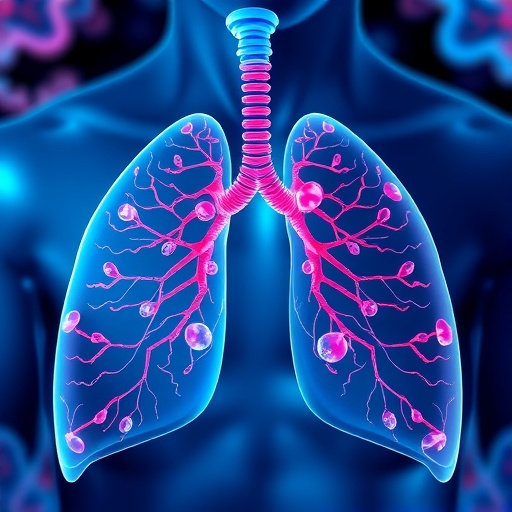In the ever-evolving landscape of medical diagnostics, clinicians frequently face the daunting challenge of making rapid decisions grounded in often fragmented and incomplete patient information. The development of electronic health records (EHRs) revolutionized data collection, amassing vast, diverse repositories of patient histories, laboratory results, medication records, and clinical notes. However, the complexity and sheer volume of these datasets have posed significant hurdles for real-time clinical interpretation, especially when tackling rare diseases or atypical symptomatology. Addressing this critical gap, a groundbreaking artificial intelligence system, dubbed InfEHR, has emerged from the collaborative efforts at the Icahn School of Medicine at Mount Sinai alongside key research partners.
InfEHR represents a paradigm shift in the utilization of electronic health records by moving beyond traditional AI diagnostic models, which mostly apply uniform pattern recognition techniques across patient cohorts. Instead, InfEHR harnesses deep geometric learning methodologies to construct a dynamic network—a diagnostic web—that interlinks disparate medical events across precise temporal frameworks for individual patients. This innovative approach enables the system not only to synthesize and contextualize scattered clinical data but also to infer hidden phenotypic patterns that have eluded conventional analyses, thereby yielding patient-tailored diagnostic insights with unprecedented granularity.
Published in the September 26, 2025 edition of Nature Communications, the InfEHR study delineates how the AI system dynamically models patient-specific timelines incorporating a wide array of discrete medical elements—clinical visits, laboratory studies, medication administrations, and vital sign measurements. By encoding these data points as nodes within a temporal network graph, InfEHR infers causal and correlative linkages that illuminate underlying pathophysiological processes. Leveraging deep learning architectures specialized in geometric and relational data analysis, the system discerns subtle yet clinically meaningful connections that facilitate refined phenotyping beyond surface-level symptom clustering.
One of the most remarkable innovations of InfEHR is its capacity to quantify and validate clinical intuitions that were previously inaccessible. According to Girish N. Nadkarni, MD, MPH, chair of the Windreich Department of Artificial Intelligence and Human Health at Mount Sinai, InfEHR effectively operationalizes hypotheses that clinicians had long suspected but could not conclusively verify due to insufficient or disjointed evidence. By translating these clinical hunches into quantifiable data-driven inferences, InfEHR not only substantiates existing medical theories but also paves the way for novel discoveries that could transform diagnostic paradigms.
Conventional AI diagnostic tools typically homogenize their analytical frameworks, applying universal models regardless of patient individuality. Contrastingly, InfEHR’s personalized algorithmic architecture customizes its investigational process based on each patient’s unique medical journey. It adapts both its querying logic—what it seeks—and its analytical lens—how it interprets—thus transcending the limitations of one-size-fits-all diagnostics. This dynamic tailoring facilitates not just improved detection sensitivity but also the capacity for the system to direct attention to unresolved clinical questions, embodying a form of AI-guided clinical reasoning.
In rigorous validation studies utilizing anonymized and privacy-protected EHR data from Mount Sinai Health System in New York and UC Irvine Health in California, InfEHR demonstrated its prowess in complex clinical scenarios. By constructing comprehensive temporal networks for thousands of patients, the system was calibrated using relatively few expert-annotated cases, illustrating its sample-efficient learning capacity. It notably outperformed established clinical decision rules in detecting two clinically significant conditions: neonatal sepsis in the absence of positive blood cultures—a stealthy but deadly infection—and acute kidney injury precipitated by surgical interventions.
Quantitatively, InfEHR excelled in discerning nuanced clinical footprints invisible to standard diagnostic heuristics. It exhibited a 12- to 16-fold improvement in correctly identifying infants manifesting culture-negative sepsis, a diagnostic challenge marked by high morbidity and mortality. Similarly, for postoperative acute kidney injury, a common yet under-recognized complication, the system’s predictive accuracy surpassed existing methods by factors of four to seven. These outcomes were consistent across hospital systems, underscoring the generalizability and robustness of InfEHR’s modeling framework.
A critical feature enhancing InfEHR’s clinical viability is its probabilistic confidence quantification. Unlike many AI systems that invariably commit to categorical predictions—even in the face of ambiguity—InfEHR integrates uncertainty estimation as an integral component of its output. It can explicitly indicate when data insufficiency precludes confident diagnosis, thereby adopting a “not sure” stance that aligns with safe clinical decision-making principles. This self-aware functionality significantly reduces the risk of erroneous results that could misguide treatment.
The conceptual leap underlying InfEHR is its reframing of diagnostic reasoning. Instead of the traditional AI question, “Does this patient’s data resemble known cases of disease?” InfEHR interrogates, “Could this patient’s unique medical trajectory plausibly be explained by an underlying disease process?” This subtle yet profound distinction aligns AI inference with causative biomedical understanding rather than mere associative pattern matching, heralding a more mechanistic and explanatory approach to clinical phenotype resolution.
The research team is committed to advancing InfEHR beyond diagnostics. Future initiatives aim to leverage the system’s adaptive, patient-centric modeling to personalize therapeutic decisions, particularly by extrapolating insights gleaned from clinical trial data to real-world patient populations that are frequently underrepresented in research settings. By bridging the demographic and phenotypic gaps between clinical studies and heterogeneous patient populations, InfEHR could revolutionize precision medicine implementation.
Justin Kauffman, MS, senior data scientist and lead author of the study, emphasizes that InfEHR embodies a probabilistic framework that dynamically synthesizes heterogeneous data points, enabling clinicians to discern which research findings are applicable to any given patient’s complex health profile. This approach is poised to transform clinical judgment from a largely heuristic discipline to one augmented by rigorous data science, enhancing both diagnostic confidence and treatment specificity.
The open dissemination of InfEHR’s computational code to the scientific community fosters collaborative refinement and broad-scale adoption. This transparency invites integration with other health informatics platforms and adaptation to diverse clinical environments, accelerating the translation of AI-driven diagnostic innovation into everyday medical practice. Moreover, the commitment to ethical and safe application of AI in healthcare reflects the leadership stance of the Windreich Department of Artificial Intelligence and Human Health, led by Dr. Nadkarni, ensuring that technological advances harmonize with patient welfare.
Mount Sinai’s Windreich Department of Artificial Intelligence and Human Health serves as a national leader in pioneering the responsible integration of AI into biomedical research and clinical care. Their interdisciplinary ecosystem, augmented by the Hasso Plattner Institute for Digital Health, exemplifies how cross-institutional partnerships can harness cutting-edge engineering, computational power, and clinical expertise to dismantle longstanding barriers in health data utilization. These collaborative efforts solidify Mount Sinai’s role at the forefront of AI-driven transformation in medicine.
This breakthrough arrives amidst a broader context where AI applications like the NutriScan tool—also developed by Mount Sinai teams—have already demonstrated measurable impacts in improving patient outcomes, such as the accelerated detection and management of malnutrition in hospitalized individuals. InfEHR’s success not only builds upon these advances but also sets a new benchmark by tackling diagnostic challenges that are fundamentally complex and have eluded conventional strategies.
As healthcare systems worldwide grapple with increasing data complexity and the imperative for personalized medicine, InfEHR exemplifies how sophisticated AI methodologies can be harnessed to transform healthcare delivery. Its fusion of deep geometric learning, temporal network analysis, and clinical expertise heralds a new era where the vast informational wealth embedded in electronic health records becomes a powerful tool for uncovering hidden disease signatures and optimizing patient care pathways.
Subject of Research: People
Article Title: InfEHR: Clinical phenotype resolution through deep geometric learning on electronic health records
News Publication Date: October 15, 2025
Web References: https://www.nature.com/articles/s41467-025-63366-6
References: Kauffman, J., Holmes, E., Vaid, A., Charney, A.W., Kovatch, P., Lampert, J., Sakhuja, A., Zitnik, M., Glicksberg, B.S., Hofer, I., & Nadkarni, G.N. (2025). InfEHR: Clinical phenotype resolution through deep geometric learning on electronic health records. Nature Communications.
Keywords: Machine learning, Adaptive systems, Systems theory
Tags: advanced data interpretation in medicineAI in medical diagnosticsclinical decision-making support toolsdeep geometric learning in healthcareelectronic health records analysisenhancing diagnostic accuracy with AIInfEHR AI systemInnovative healthcare technologiesintegration of diverse medical datasetsovercoming data fragmentation in EHRspersonalized patient diagnosticsrare disease detection using AI





